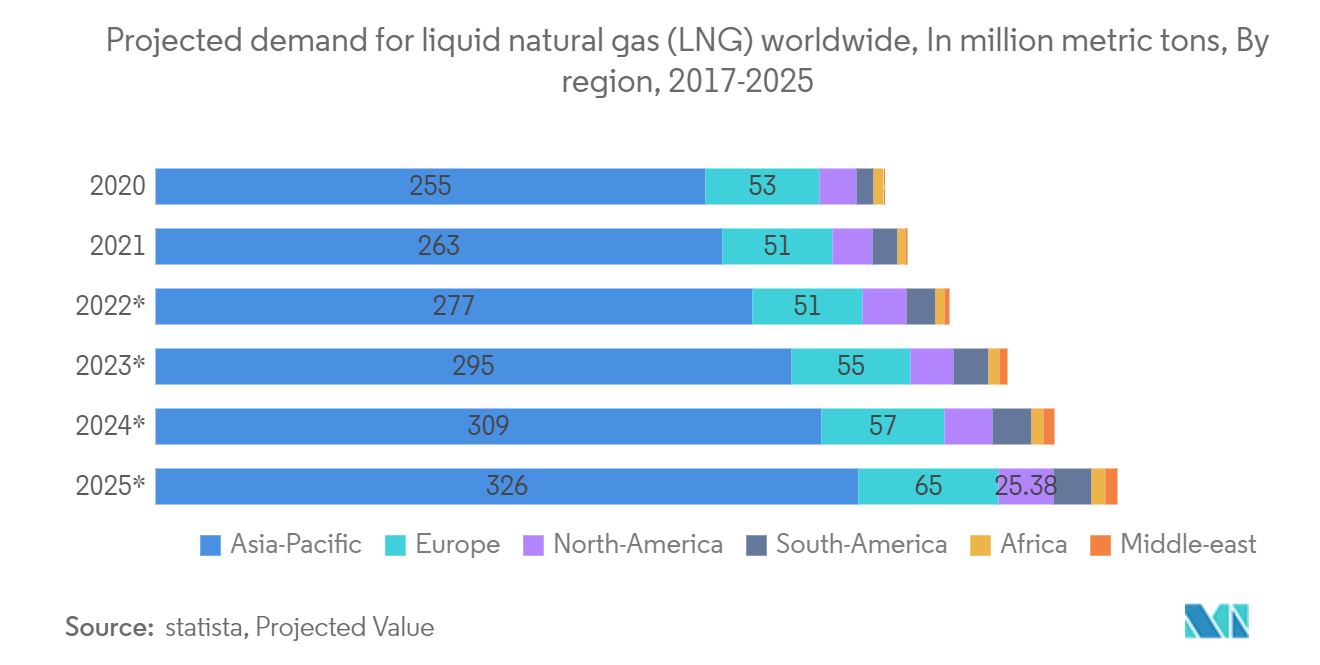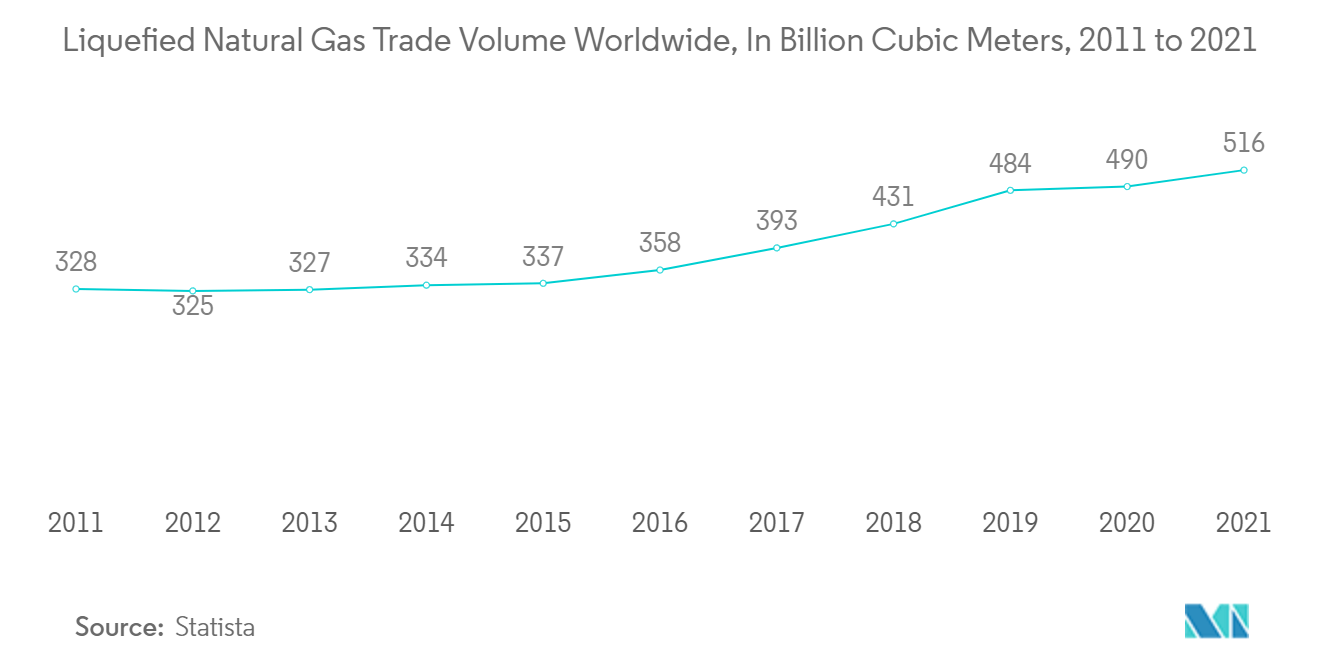Market Trends of Lng Storage Tank Industry
This section covers the major market trends shaping the LNG storage Tank Market according to our research experts:
Increasing demand for LNG
Current investments in better LNG infrastructure in the year 2021 are expected to fuel greater demand for crude material in the coming years. Demand is set to see greater year-on-year growth from 2021 onwards, with the Middle East expected to become an LNG consumer.
The recent growth in the liquefied natural gas market, including new proposals for both production and receiving facilities, as well as increased LNG shipbuilding, indicate that liquefied natural gas will most certainly play an important role in the future global energy market.
Vessel owners are increasingly considering LNG as a replacement fuel for marine diesel and heavy fuel oil, also called bunker fuel. The demand for natural gas has significantly increased in industries like the power sector, and fertilizer sector, where it is also used as feedstock for the petrochemical industry. Thus, the demand from different industries will boost the LNG carriers' market growth.
Global demand for liquefied natural gas (LNG) increased to 360 million tonnes in 2020, according to Shell's latest annual LNG Outlook - despite the unprecedented volatility caused by the COVID-19 pandemic, which resulted in lockdowns around the world.
Rise in global fuel demands, surge in population, and growth of industries have boosted the demand for LNG. LNG is expected to be used extensively in various industrial applications. For safe transportation of gas, its volume is reduced by change in its state. These factors have increased the demand for LNG storage tanks. Factors such as availability of plenty of natural gas reserves, efficiency, and low carbon footprint have further increased the use of LNG, thereby creating a demand for LNG storage tanks. Furthermore, the use of LNG in vehicles is increasing.
With an increasing number of buyers and suppliers, the industry has evolved to offer a wider choice of commercial structures to meet changing needs. Against a backdrop of increasing Net Zero Emissions (NZE) targets, the industry will need to further innovate to offer cleaner energy supply.

Growing Trade of LNG is driving the market
At present, the US is the largest producer of natural gas across the world. In the US, natural gas supplies nearly one-third of the primary energy and is one of the key heating fuels for almost half of US households. A large volume of LNG is transported through the sea route, where LNG is loaded onto double-hulled ships and the gas is off-loaded to well-insulated storage tanks. Later it is re-gasified for admission into the pipeline distribution network.
Moreover, LNG is also shipped in smaller quantities, generally for shorter ocean distances. The growing LNG trade in small-scale shipments is commonly transported in the same containers used on trucks for international trade, particularly outfitted with cryogenic tanks. Further, Shell announced that the Asian requirement for LNG was anticipated to drive the growth of the market in 2021, as the LNG trade is expected to recover from the COVID-19 impact. According to the outlook, the LNG trade growth would reach around 12 Mt in 2022 and ~15 Mt in 2023. Therefore, this rise in the international LNG trade is driving the growth of the LNG storage tanks market.
In 2020, the pandemic and resulting economic fallout resulted in a much lower increase in LNG trade. Figures reached their peak at an estimated 39 million metric tons per annum delivered ex-ship in 2019. The total trade volume in 2020 was 360 million metric tons. In 2021, global liquefied natural gas trade volume amounted to 516 billion cubic meters. Between 1970 and 2021, figures increased by 513 billion cubic meters.
In 2021, Australia was the world's major LNG exporting country, with and export volume of 108 billion cubic meters. At that same time, China was the major LNG importing country, with figures over 109 billion cubic meters. Most of the growth is forecast to be driven by demand in emerging Asian countries, led by China and India, as they switch from coal. Outside of China, industrialization is seen as supporting natural gas consumption.

